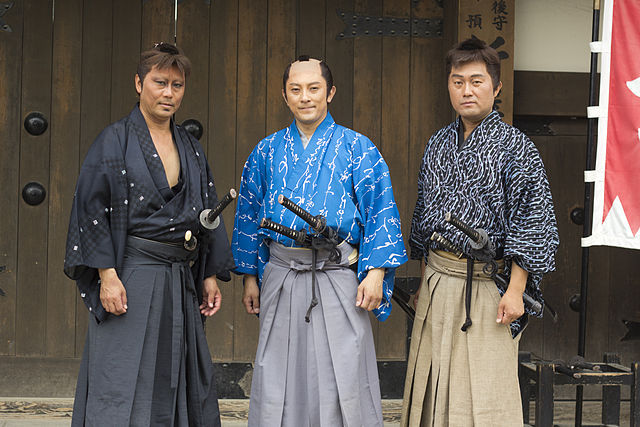The revenge of the forty-seven rōnin , also known as the Akō incident or Akō vendetta, is a historical event in Japan in which a band of rōnin avenged the death of their master on 31 January 1703. The incident has since become legendary. It is one of the three major adauchi vendetta incidents in Japan, alongside the Revenge of the Soga Brothers and the Igagoe vendetta.
"Revenge of the Loyal Samurai of Akō" by Yasuda Raishū (ja) (Homma Museum of Art), with iconography borrowed from the Adoration of the Shepherds
Memorial stone marking the site of the Matsu no Ōrōka (Great Corridor of Pines) in Edo Castle, where Asano attacked Kira
Ukiyo-e showing Ōishi signaling an attack by beating a drum. By Tsukioka Yoshitoshi.
The rōnin attack the principal gate of Kira's mansion
In feudal Japan (1185–1868), a rōnin was a samurai who had no lord or master and in some cases, had also severed all links with his family or clan. A samurai becomes a rōnin upon the death of his master, or after the loss of his master's favor or legal privilege.
A woodblock print by ukiyo-e master Utagawa Kuniyoshi depicting famous rōnin Miyamoto Musashi having his fortune told
Ukiyo-e woodblock print by Yoshitoshi depicting Oishi Chikara, one of the forty-seven rōnin
Graves of the forty-seven rōnin at Sengaku-ji
Actors portraying ronin on left and right, employed samurai in the middle. His chonmage makes him identifiable as an employed samurai.








